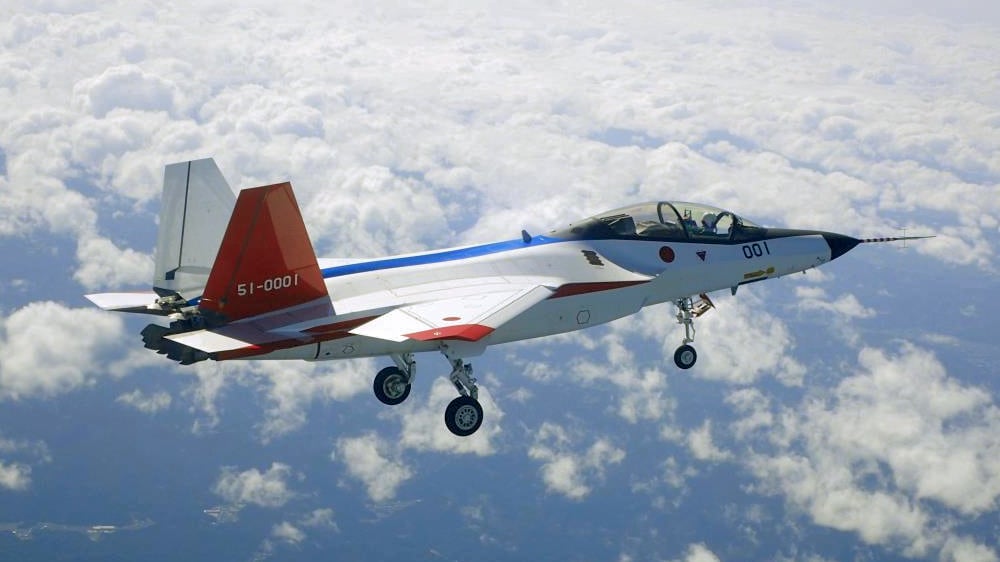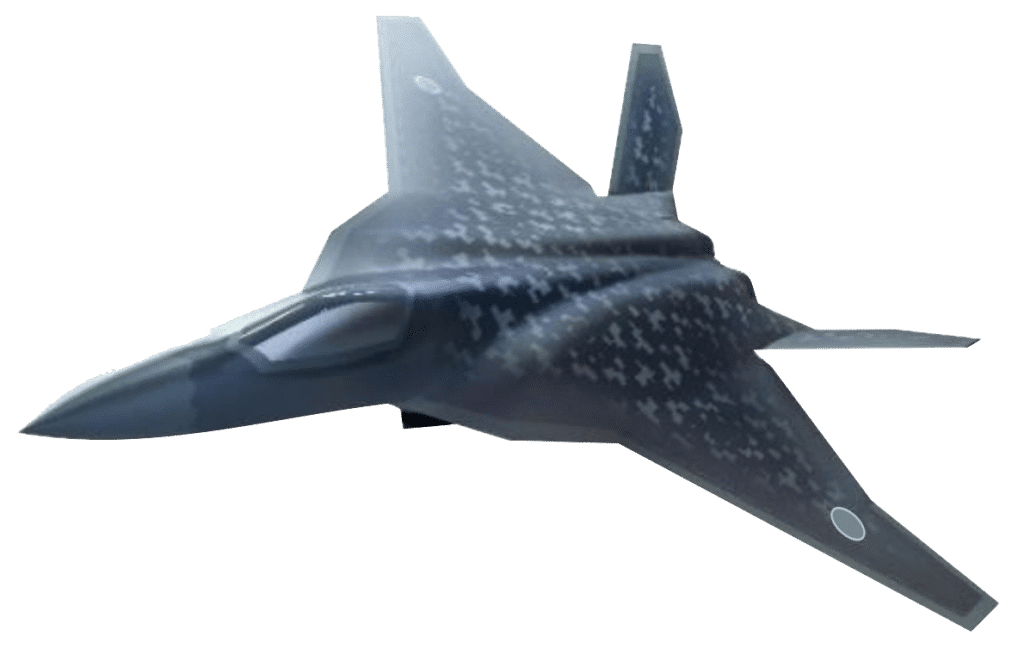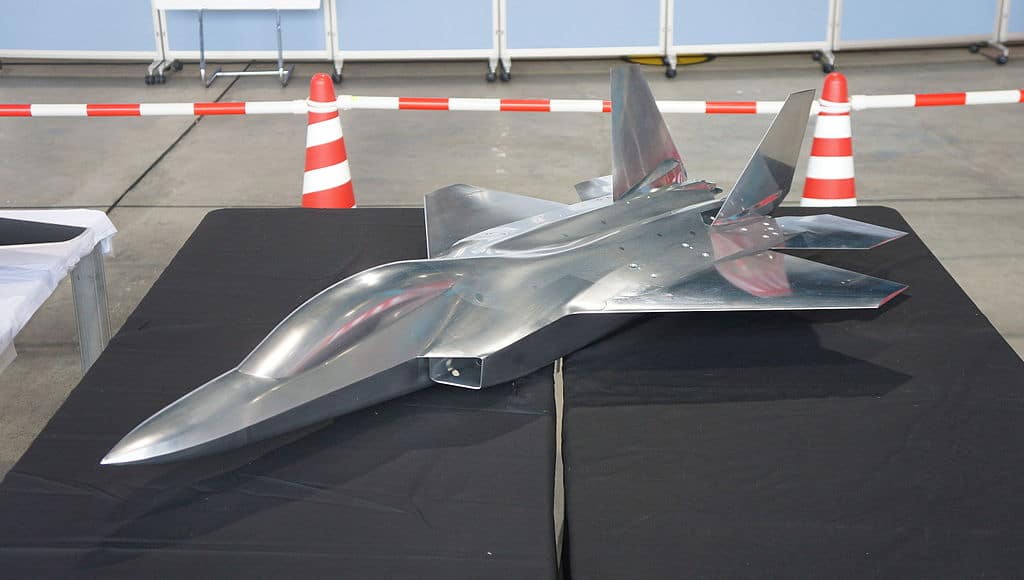Aviation
Meet Japan’s 6th Gen Fighter jet and its mind blowing features
When the United States rejected the sale of F-22 aircraft, Japan began work on a new 6th-generation fighter jet.
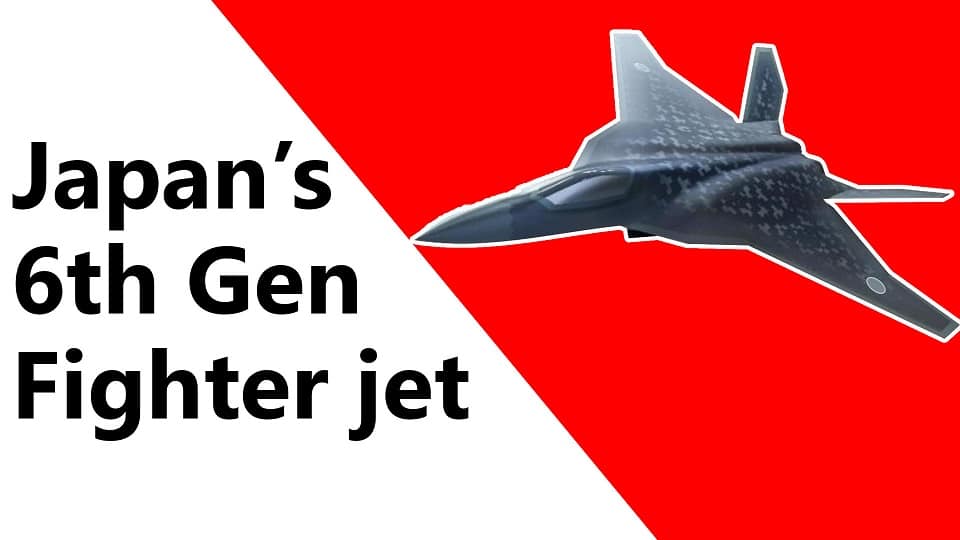
Welcome back to jetline marvel for another thrilling episode. As we all know Building Fighter jets is a difficult task for any aerospace producer. since it necessitates a great deal of material and technological expertise. But what if Japan, the world’s leading innovator in technological fields, creates its own fighter jet and that too a sixth-generation?
When the United States rejected the sale of F-22 aircraft, Japan began work on a new 6th-generation fighter jet.
We shall examine some of the fascinating details regarding this aircraft in this video..
1. The Japan FX scheme is pushed after the US rejected the F 22 for Japan.
The program began in 2009, but because the U.S. Congress forbade the export of the aircraft in order to protect its technological secrets, including its extensive use of stealth, Japan was forced to develop its own modern fighter that would be outfitted with stealth features and other cutting-edge systems.
Aircraft comparison Brazil’s KC-390 vs Japan’s Kawasaki C-2(Opens in a new browser tab)
The Mitsubishi Heavy Industries-built X2 is the first experimental Stealth technology demonstration for the sixth generation of aircraft. The prototypes and stealth technology are learned using this aircraft.
On April 22, 2016, the X-2 completed its first flight, taking off from Nagoya Airfield and landing at Gifu Air Field of the JASDF.
India’s $3 Billion MQ-9 Reaper Drones Deal With US In Advanced Stage(Opens in a new browser tab)
2. It has Fly-by optics feature and 3D vectoring thrust control.
Three paddles are located on each engine nozzle of this aircraft, which has 3D thrust vectoring identical to the system used on the Rockwell X31. That enables fast maneuverability for aircraft and supports multiple flight trajectories.
Additionally, the data is processed 100 times faster than with wires because of the demonstration of fly-by optics, a feature exclusive to this aircraft. It has benefited from immunity to electromagnetic interference.
Additionally, this aircraft has the ability to self-repair its flight controls, allowing it to autonomously detect faults or damage to its flight control surface. maintain, calibrate, and perform controlled flying.
3. The electric actuator is taking the place of the hydraulic one.
The flaps and other oscillate devices of fighter jets are typically operated by hydraulic actuators, however, Japan is utilizing electric actuators for the FX program. The hydraulic actuator takes up more room and places more restrictions on designs, whereas the electric actuator can be fitted to the design. enabling greater freedom in the aircraft’s body design. Body weight reduction and increased aircraft mobility are other benefits. The control, power, and leg/brake systems of the fighter are all equipped with electronic actuators.
4. Adhesive bondings are replacing fasteners.
It is also claimed that a new fighter aircraft level is being developed. The adhesive moulding will be replaced with fewer fasteners on this aircraft. by using adhesive molding to bind composite materials together, fasteners can be eliminated. The “integrated/fasteners structure” technology is the name given to this process. Heat shield technology is positioned around the engines to enable the application of aluminum alloys and carbon fiber reinforced polymer (CFRP) to minimize weight in the vicinity.
5. This aircraft will have the radar of the F35 version.
The F-X uses sensors that are already built into the aircraft to better detect stealth aircraft. The sensors consist of an infrared camera, a passive radio frequency (RF) sensor, and an active electronically scanned array (AESA) radar.
To defend against threats from aircraft, air-to-air missiles, and surface-to-air missiles, the F-X has an RF “self-defense” system. By being informed of the threat and instantaneously and worldwide sabotaging its radio waves, the system accomplishes both ESM and ECM. which sensor is most likely to be found in the wings and tail.
6. Its surface contains several unique coverings.
Most of the 5th gen fighter jets have a special coating on the surface since the FX also special coating. The stealth design will have serpentine air ducts and an internal weapons bay to reduce the amount of radar reflection. It also has a carbon-based material absorber which helps to reduce the detection range from radar threats by about half. It also has the metamaterial also used to reflect radio waves.
7. This engine is more compact but still powerful when compared to the GE F110 engine.
Axial-flow afterburning turbofan with a 6-stage high-pressure compressor and a 3-stage fan, the XF9-1 has dual redundant dual spool construction. The official thrust level for the prototype engine is “11 tonnes” (107 kN) The development of future fighter engines aims at a maximum thrust of 20 tonnes (196 kN)
The XF9 has a high combustion temperature of 1800 °C. It’s notable how little the XF9 is compared to how powerful it is. For instance, the General Electric F110 engine intake on the XF9 is 30% smaller than that on the F-2.
8. It’s claimed that the F-X is larger than the F-22.
The aircraft’s size suggests that the MoD wants it to have a very long range and a huge payload capacity. The Mitsubishi F-2 will be replaced by the next-generation F-3 or F-X, Japan’s first homegrown stealth fighter aircraft. It will be a twin-engine fighter with six internal weapons mountable. As The EuroAsian Times has stated, the fighter jet will complement the smaller F-35 aircraft. F-X, together with Chinese and Russian fighters, might be a generation ahead of those three. By 2035, it is anticipated to be fully functioning.
9. It will be equipped with contemporary armaments.
A microwave weapon will be mounted aboard the F-X to deflect approaching missiles. This aircraft has the ability to control drones and its drone system interfaces with that of the Boeing wingman drone system.
This will be a breakthrough in operating a greater range when compared to deploying drones that can be launched from an aircraft’s weapons bay to reach and target the adversary at a great distance.
10. It is looking for a global partnership to cover research expenditure.
It estimated $48 billion cost of the program. Japan is considering working together with the US and the UK. It may give the UK greater significance than the US for a number of reasons. As of mid-April 2019, several sources claim that the United States was willing to allow Japan access to portions of the F-35’s software in exchange for collaboration on the construction of the F-X fighter. The particular partnership for Japan’s FX program is still to be chosen, though.
A decision has not yet been made about Japan’s interest in helping India develop the AMCA fifth-generation fighter plane.

Aircraft comparison
Osprey is faster than Chinook helicopter ?
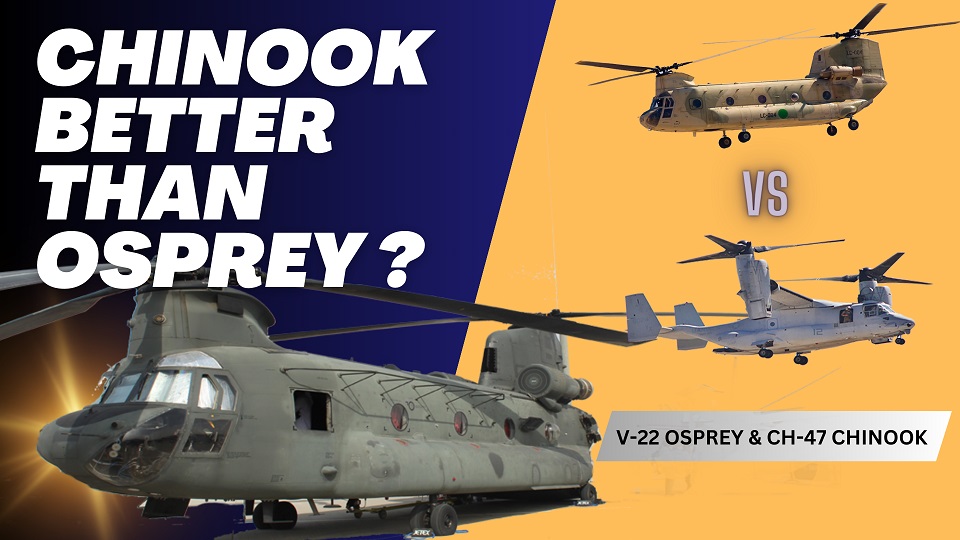
In this article, we’ll delve into two distinct military aircraft that have played essential roles in United Air Force defense. Both aircraft have unique characteristics in terms of usage and flying capabilities. One is capable of vertical takeoff and flies like an aircraft, while the other is a helicopter with two tandem rotors. Let’s explore each of these aircraft in detail.
The speed of helicopters can vary depending on several factors such as their design, engine power, payload, and mission requirements. Generally speaking, the Osprey (specifically referring to the V-22 Osprey) is faster than the Chinook helicopter.
The V-22 Osprey is a tiltrotor aircraft, meaning it can take off and land vertically like a helicopter but also tilt its rotors forward to fly like an airplane. This design allows the Osprey to achieve higher speeds compared to conventional helicopters. The cruising speed of the V-22 Osprey is around 241 knots (277 mph or 446 km/h).
On the other hand, the Chinook helicopter, such as the Boeing CH-47 Chinook, has a cruising speed typically around 170 knots (196 mph or 315 km/h). While the Chinook is a highly capable and versatile helicopter known for its heavy-lift capabilities and reliability, it generally operates at lower speeds compared to the Osprey.
The comparison between an Osprey and a Chinook helicopter involves contrasting two distinct aircraft with different designs, capabilities, and purposes:
MV-22 Osprey details:
The Osprey has garnered significant controversy since its inaugural flight, primarily stemming from issues associated with its tiltrotor design. These challenges have led to several incidents and crashes, resulting in the tragic loss of pilots and crew members and prompting multiple groundings of the aircraft.
However, efforts are underway to address these technical issues swiftly, with plans to rectify the problems and resume flights promptly. Despite these setbacks, the Osprey remains crucial in operational contexts, offering enhanced capabilities for transporting both cargo and crew members, underscoring its pivotal role in various missions.
Except for the United States and Japan, no other country has been granted authorization to utilize the Osprey aircraft. Its unique design and specialized nature, being built in the United States, likely necessitate governmental permission for export to other nations.
The Osprey stands out for its groundbreaking design and innovation, featuring the ability to transition from vertical to horizontal rotor positions while also generating thrust like a conventional aircraft.
- MV-22 Osprey:
- The MV-22 Osprey is a tiltrotor aircraft, meaning it can take off and land like a helicopter but fly like a fixed-wing aircraft once airborne.
- It’s primarily used for vertical takeoff and landing (VTOL), troop transport, cargo transport, and aerial refueling.
- The Osprey has a unique ability to combine the vertical lift capability of a helicopter with the speed and range of a turboprop aircraft.
- It can carry up to 24 troops or 20,000 pounds of internal cargo and has a top speed of around 315 miles per hour (507 km/h).
- The Osprey is utilized by the U.S. Marine Corps, U.S. Air Force Special Operations Command, and other military forces around the world.
Boeing CH-47 Chinook:
The Chinook helicopter stands as a testament to unparalleled engineering and innovation, making it one of the most distinctive aircraft ever constructed. Since its inception, no other nation has attempted to replicate its singular design, owing to the extraordinary precision and aerospace technology required for its construction. This helicopter, revered as an engineering marvel, has become a staple in major battlegrounds, renowned for its exceptional capacity to transport troops and cargo to any destination. Remarkably versatile, it operates seamlessly on both land and water surfaces, boasting an integrated floating system that enhances its capabilities even further.
Selected countries have been granted permission to utilize the Chinook helicopter, showcasing its global appeal and strategic importance. Furthermore, ongoing development efforts are underway to enhance the speed and carrying capacity of the next version of this iconic aircraft. Renowned for its exceptional safety record, the Chinook stands as one of the safest helicopters in operation today, with a remarkably low incidence of crashes. Its versatility is unmatched, making it an invaluable asset for operations in diverse terrains and environments.
- Boeing CH-47 Chinook:
- The Chinook is a tandem rotor helicopter, known for its distinctive twin-rotor design.
- It’s a heavy-lift helicopter primarily used for troop transportation, artillery emplacement, battlefield resupply, and various other missions.
- The Chinook has a rear loading ramp for cargo and troops, making it well-suited for quick loading and unloading.
- It can carry up to 55 troops or 24,000 pounds of cargo internally and has a top speed of around 170 miles per hour (274 km/h).
- The Chinook is widely used by the U.S. Army and various other military forces worldwide, including the UK, Canada, and others.
Comparison:
- Design: The Osprey is a tiltrotor aircraft, while the Chinook is a tandem-rotor helicopter.
- Speed and Range: The Osprey has a higher top speed and longer range compared to the Chinook due to its fixed-wing aircraft capabilities.
- Payload Capacity: The Chinook generally has a higher payload capacity for both troops and cargo compared to the Osprey.
- Versatility: While both aircraft are versatile in their own right, Osprey’s ability to take off and land vertically as well as fly at high speeds over long distances gives it a unique advantage in certain scenarios. However, the Chinook’s ability to carry larger payloads makes it better suited for heavy lift operations.
- Cost and Maintenance: Maintenance and operating costs may vary between the two aircraft, with tiltrotor technology typically being more complex than traditional helicopter designs.
Most Popular .
These are the Top 10 best US airlines of 2024
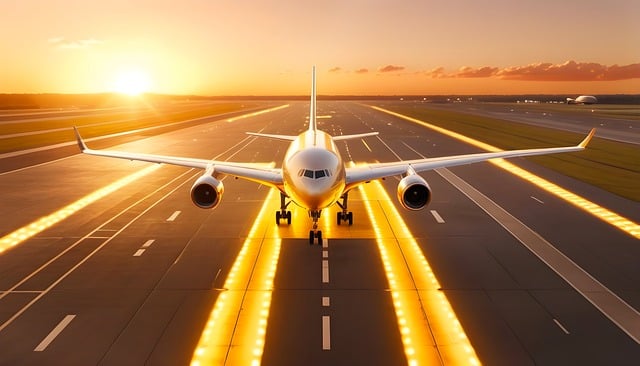
In an era where air travel plays an integral role in connecting people and places, the quality of airline service can significantly impact travelers’ experiences.
As we navigate the ever-changing landscape of aviation, insights into the performance and reliability of different carriers become invaluable. Enter WalletHub’s comprehensive analysis, offering a glimpse into the 10 best US airlines of 2024. Join us as we embark on a journey through the clouds, exploring the top performers.
Best airlines of 2024
- Alaska Airlines (68.07 out of 100): Anchoring the list is Alaska Airlines, celebrated for its consistency and customer satisfaction. With a score of 68.07, Alaska Airlines sets the standard for excellence in the skies.
- SkyWest Airlines (65.96): Following closely behind is SkyWest Airlines, recognized for its operational prowess and reliability. With a score of 65.96, SkyWest secures its position among the elite.
- Spirit Airlines (65.69): Surging into third place is Spirit Airlines, renowned for its affordability and expansive route network. Despite its low-cost model, Spirit Airlines earns acclaim with a score of 65.69.
- Delta Air Lines (61.56): A stalwart of the industry, Delta Air Lines maintains its reputation for superior service and efficiency. With a score of 61.56, Delta continues to soar above the competition.
- United Airlines (51.96): United Airlines occupies the middle ground, offering a balance of convenience and comfort to travelers. With a score of 51.96, United remains a dependable choice for domestic and international flights.
- JetBlue Airways (51.6): JetBlue Airways, known for its focus on customer experience and amenities, secures its place in the top 10 with a score of 51.6.
- Hawaiian Airlines (48.3): Transporting passengers, Hawaiian Airlines earns accolades for its hospitality and island-inspired service. With a score of 48.3, Hawaiian Airlines embodies the spirit of aloha.
- American Airlines (46.52): Despite facing challenges, American Airlines maintains its presence among the top performers with a score of 46.52, showcasing resilience in the competitive aviation landscape.
- Frontier Airlines (43.57): Frontier Airlines offers budget-conscious travelers a gateway to the skies with its affordable fares and diverse destinations. With a score of 43.57, Frontier Airlines secures its place in the top 10.
- Southwest Airlines (36.03): Rounding out the list is Southwest Airlines, renowned for its no-frills approach and extensive route network. With a score of 36.03, Southwest Airlines remains a popular choice for travelers seeking simplicity and value.
Aviation
South Korea Introduces Cutting-Edge MRO Center for F-35 and IAI

South Korea is set to make waves in the aerospace industry with the establishment of a cutting-edge Maintenance, Repair, and Overhaul (MRO) hub for F-35 fighter jets and IAI (Israel Aerospace Industries) aircraft.
Central to this initiative is the specialization in converting Boeing 777-ERSF, colloquially known as the “Big Twin,” from passenger to freighter configurations. Under the terms of the agreement, IAI will spearhead the conversion of six B777-300ER and B777-200LR aircraft annually, commencing in 2024. This strategic move is in response to the anticipated surge in demand for wide-body freighter aircraft capable of long-haul flights.
Furthermore, South Korea’s forward-looking vision extends beyond aircraft conversion, with plans to establish a Lockheed Martin F-35 maintenance, repair, and overhaul depot at Cheongju Air Base by 2027. This strategic move not only enhances the operational readiness of South Korea’s air force but also positions the nation as a regional hub for F-35 maintenance expertise.
In preparation for this expansion, thirty Republic of Korea Air Force (ROKAF) engineers and technicians are slated to undergo intensive maintenance training in the United States in 2025, a testament to South Korea’s commitment to fostering local expertise and talent.
IAI’s visionary approach to certification and collaboration underscores the potential for transformative change. With plans for the 777-300ERSF certification process set to unfold in Israel, followed by the rigorous scrutiny of regulatory agencies such as the US Federal Aviation Administration (FAA), the stage is set for the ‘Big Twin’ to soar to new heights of success.
In partnership with esteemed entities like STK and Incheon International Airport Corporation, this collaboration promises to unleash a wave of benefits, amplifying the resilience and competitiveness of the Korean aviation sector while catalyzing job creation and economic prosperity.

